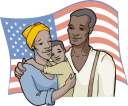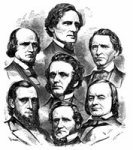
Worksheets and No Prep Teaching Resources
Reading Comprehension Worksheets
Black History and Blacks in U.S. History
A Nation Divided
(1840-1861)

Black History and Blacks in U.S. History
| edHelper's suggested reading level: | grades 7 to 8 | |
| Flesch-Kincaid grade level: | 7.96 |
|
Slavery and the Law
By Mary L. Bushong |

|
 |
Create Weekly Reading Books
Prepare for an entire week at once! |
| Leave your feedback on Slavery and the Law (use this link if you found an error in the story) |
 |
Black History and Blacks in U.S. History
|
 |
A Nation Divided (1840-1861) |
 |
United States
|
|
|
 | Fifty States Theme Unit |
 |
Document Based Activities |